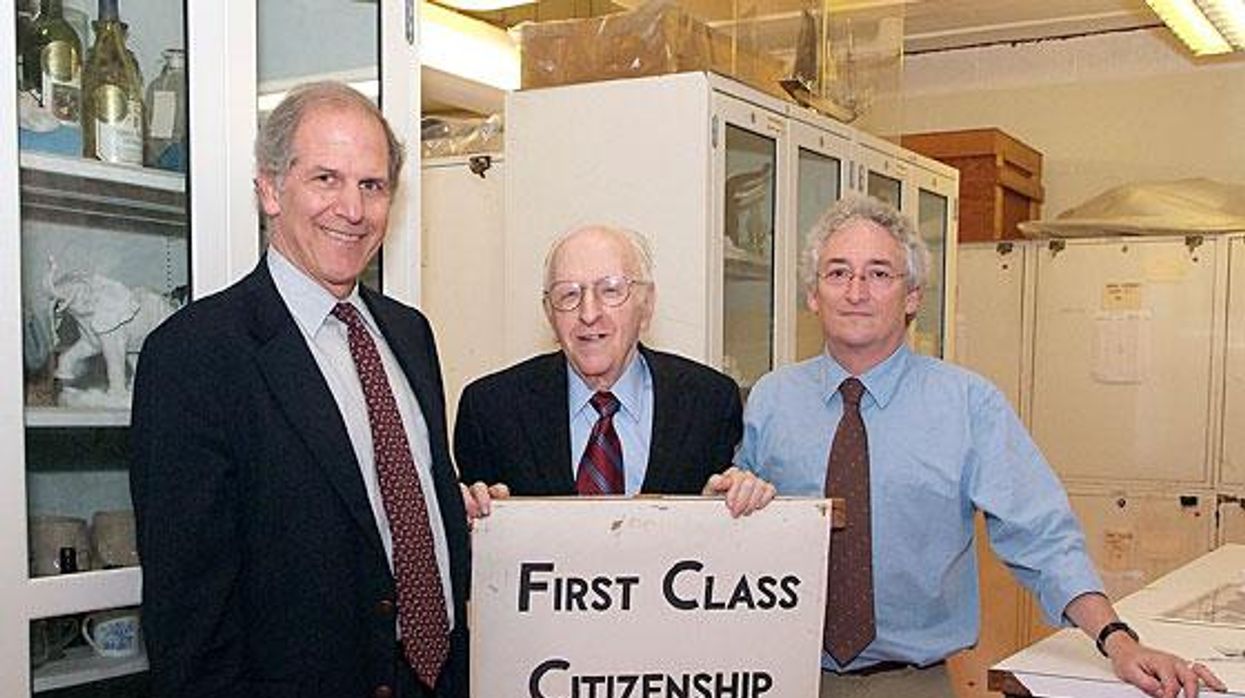Voices
Op-ed: Why Frank Kameny Belongs at the Smithsonian
Op-ed: Why Frank Kameny Belongs at the Smithsonian

October 13 2011 4:13 PM EST
By continuing to use our site, you agree to our Privacy Policy and Terms of Use.
Op-ed: Why Frank Kameny Belongs at the Smithsonian
Op-ed: Why Frank Kameny Belongs at the Smithsonian

Frank Kameny left us earlier this week. He died peacefully in his sleep at his home in Washington, D.C. Thankfully, he did not live as he died. He lived loud. He was relentless, argumentative, and articulate. Because he was those things, we are all safer and healthier for it.
The details of Kameny's life and activism have been written up in obits in The Advocate, The Washington Post, The New York Times, and elsewhere. The factual details assure his place in history, but there is another, less concrete aspect to the importance of his life.
At 86, he was one of the last of that generation of activists who moved gay rights forward by making public spectacles of themselves, in the best sense of the term. They put on business suits and dresses and picketed the White House and gave us a face and identity when the prevalent stereotype of gay people was one of menacing perverts.
Kameny was nearly 50 before being gay was removed from the list of psychiatric disorders. He was largely responsible for that famous "cure with the stroke of a pen" in 1973.
Kameny has been the subject of numerous tributes, and he deserves them all and more for his creativity and continual commitment to LGBT rights. He was the nagging conscience of federal bureaucrats, prejudiced psychiatrists, and yes, reticent "homosexuals." Kameny pushed everyone to accept LGBT people as productive members of society and to include us in the civil rights guaranteed under the Constitution.
He was known for pushing people. In the 1950s and 1960s, he pushed members of the Mattachine Society to ditch their neutrality and get politicized. He clashed with many in the homophile movement ranks over the importance of taking strong public positions on gay rights. He pushed back at the Civil Service Commission when it fired him from his Army job, and at the Pentagon, and at the Supreme Court, and he pushed his friends and acquaintances to push with him.
Kameny was unique in his combination of energy, intellect, and political savvy. Kameny knew politics; others had unique skill with literature, art, and organizing. They too pushed through the hatred and barriers and bashings: Harry Hay, Chuck Roland, Barbara Gittings, Allen Ginsberg, James Baldwin, Del Martin, Bayard Rustin, Audre Lorde, Gloria Anzaldua. What Kameny and these lions succeeded in doing through their risk-taking and doggedness was to provide authentic and alternative ways of understanding sexuality and difference.
Katherine Ott is a curator at the Smithsonian's National Museum of American History. Frank Kameny and the Kameny Papers Project donated protest posters, buttons, and ephemera to the museum's Political History Collection in 2006.
Charlie Kirk DID say stoning gay people was the 'perfect law' — and these other heinous quotes